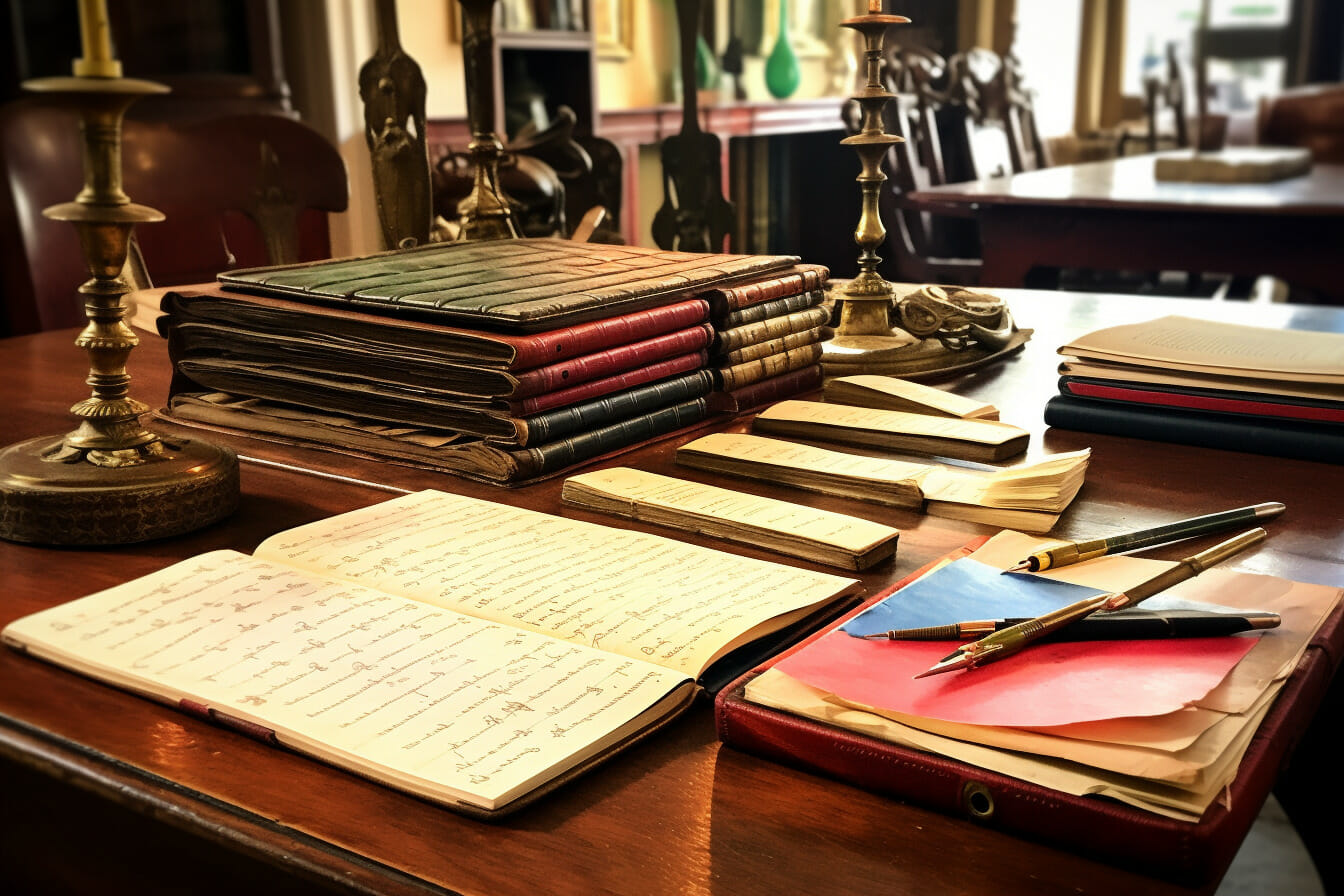Illustrating General Ledger Entries: Examples
Have you ever wondered how businesses keep track of their financial transactions? It’s all thanks to a critical accounting tool called a general ledger.
In this article, you’ll explore various general ledger examples, understand its role, and see how it’s used to balance the books.
Get ready to boost your financial knowledge and learn how this essential tool is applied in real-life scenarios.
Table of Contents
Understanding the Role of a Key Accounting Tool

Let’s understand the role of a critical accounting tool, the general ledger.
Picture it as the grand central station of accounting, where every transaction lands and gets classified.
It’s like your financial diary, recording all your business’s financial transactions.
Imagine you’re running a business. Each time you sell a product, purchase equipment, or pay salaries, it’s recorded in your general ledger.
Each transaction gets placed into specific accounts like sales or expenses, which are then used to create financial statements.
The general ledger helps you keep track of your company’s financial health.
It’s not just about recording transactions. It’s about understanding where your money is going and coming from.
By maintaining an accurate ledger, you’re keeping your business financially transparent and sound.
Tracing Financial Transactions
You’ll need to trace financial transactions to ensure accuracy and transparency in your business’s accounts. To do this, you’ll use a general ledger.
This essential accounting tool provides a comprehensive record of all your company’s financial transactions.
For example, let’s say your business makes a sale. You’d record the sale in your sales journal and then post the transaction to your general ledger. The ledger will include the date, a description of the transaction, and the amount. Plus, it will show the transaction’s impact on your assets, liabilities, and equity.
By regularly reviewing and reconciling your general ledger, you can identify any discrepancies or errors, ensuring your financial records are accurate. This will give you a clear picture of your business’s financial health.
Balancing the Books

Balancing the books is a critical task in accounting and requires meticulous attention to detail to ensure every financial transaction is accounted for and matches the company’s bank statements. It’s a two-step process that involves verifying the accuracy of individual ledger entries and then comparing the total amount of debits and credits.
Don’t be daunted, though. Start by comparing the total debit and credit amounts. They should be equal. If they’re not, you’ve got an imbalance. Then, look at each transaction. Does it correctly reflect your financial records? If not, you’ll need to adjust it.
And remember, the trial balance is critical. Your general ledger is a snapshot of your financial health, so keep it accurate and up-to-date to make informed business decisions.
Real-Life Application Scenarios
Understanding real-life application scenarios can help you hone your book-balancing skills in your day-to-day business operations.
Let’s say you own a bakery. Each time you purchase ingredients for your pastries, you record these costs in your general ledger under ‘Inventory.’
When you sell a pastry, you’d record the income under ‘Sales’ and reduce your ‘Inventory’ by the cost of ingredients used.
Suppose you take out a loan to buy a new oven. The amount borrowed would go under ‘Liabilities,’ while the oven’s cost would be recorded under ‘Assets.
As you pay off the loan, you’d correspondingly reduce your ‘Liabilities’ and ‘Cash’ accounts.
These examples demonstrate how a general ledger reflects your business’s financial health and guides your financial decisions.
Boosting Your Financial Knowledge

Boosting your financial knowledge isn’t just about understanding the numbers. It’s about grasping the story they tell about your business. Your general ledger is a treasure trove of information, providing insights that can guide crucial financial decisions.
For instance, by examining your ledger’s revenue and expense accounts, you can glean valuable information about your profitability. You can understand your company’s financial health by looking at the assets and liabilities.
Furthermore, understanding how to interpret these numbers can help you spot trends, identify potential issues, and devise strategies for growth. So, don’t just see your ledger as a collection of numbers but as a roadmap to your business’s financial future.
After all, the more you know, the better decisions you can make to ensure your business’s success.
Frequently Asked Questions
How are ledger accounts used?
Ledger accounts are used to record and track all financial transactions of a business. They provide a detailed record of the company’s economic activities and serve as the basis for preparing financial reports.
What are the types of general ledger accounts?
Some common types of general ledger accounts include assets (such as cash, inventory, and equipment), liabilities (such as accounts payable and loans), equity (such as owner’s equity), revenue (such as sales), and expenses (such as rent and salaries).
What is the balance sheet?
The balance sheet is a financial statement showing a company’s assets, liabilities, and equity at a specific time. It provides a snapshot of the company’s financial position.
Can you provide some general ledger examples?
Sure! Some examples of general ledger accounts include cash accounts, accounts receivable, accounts payable, inventory, salaries expense, rent expense, and sales revenue.
What are journal entries?
General Journal entries are accounting records of individual transactions in the general ledger. They include information about the accounts affected, the amounts debited or credited, and a description of the transaction.
What is an income statement?
An income statement, also known as a profit and loss statement, shows the company’s revenues, expenses, and net income or loss for a specific period. It helps assess the profitability of the business.
What is double-entry bookkeeping accounting?
Double-entry accounting is a bookkeeping method that requires every financial transaction to have equal and opposite entries in at least two different chart of accounts. It ensures that the accounting equation (assets = liabilities + equity) remains balanced.
What are the types of general ledger accounts?
The types of general ledger accounts include asset accounts, liability accounts, equity accounts, revenue accounts, and expense accounts.
What are journal entries?
Journal entries are the records of individual transactions in a company’s accounting system. They include the date, description, and amounts of debits and credits for each transaction.
What is double-entry accounting?
Double-entry accounting is a system of bookkeeping that requires every business transaction to have equal and opposite effects on at least two accounts. It ensures that the accounting equation (assets = liabilities + equity) remains balanced.
Conclusion
You’ve now grasped the importance of a general ledger in accounting.
You’ve seen its crucial role in recording financial transactions and balancing the books.
Real-life examples have shown you its practical application.
This knowledge is a significant step in boosting your financial literacy.
Keep diving into these concepts, and you’ll become even more proficient in managing your or your business’s finances.













